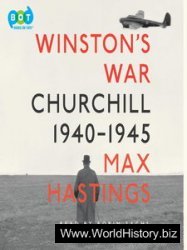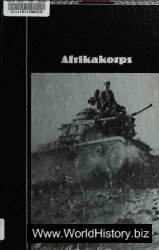•At 11 a. m. on Sunday morning, 17th September, 1944’ we are told by Lieutenant-General Sir Brian Horrocks, ‘I climbed up an iron ladder leading to the flat roof of a large factory on the south bank of the Meuse-Escaut canal which was to be my command post for the opening stages of the battle. It was a peaceful, sunny Sunday morning... .
‘Then I heard on the wireless that the airborne divisions were on their way. Suddenly the armada appeared overhead.... I ordered “Zero hour, 1435 hours”. At 2 pm, precisely, there was a sudden deafening roar and a noise as though an express train was passing overhead. Our guns had opened their counter-artillery programme and tlie battle of Arnhem was on.’
Manhandling their heavy shells from stack to breech, the British. Belgian and Dutch gunners were kept hard at work. As the counter-bombardment programme switched from target to target, 144 fleld guns began a rolling barrage over the narrow frontage of the corridor. Thirty-six medium guns opened Are to thicken it.
Quite separately, 120 fleld guns and a battery of 8-inch heavy guns began to drop concentrations of shells on troop positions, headquarters and vehicle parks selected by ground observers and air reconnaissance during the preceding days. From zero hour, eight rocket-firing Typhoons swooped down on to German positions on either side of the road leading to Valkenswaard and Eindhoven - the southernmost stretch of Hell’s Highway.
At zero hour, the commander of the leading tank troop, a lieutenant of the 2nd Irish Guards named Keith Heath-cote, brought his handset to his mouth to say. ‘Driver advance’. Squeaking and creaking on their tracks, the tanks began to lumber forward towards the smoke of their own shellfire, across the Dutch frontier.
The leading squadron was perhaps 1,000 yards from its start point when the boom and clangour of anti-tank action began in their rear. Very
Tanks of the Guards Armoured Division on the way to Eindhoven
A column of transport vehicles passing along a Dutch road as the 11th Armoured Division advance
Quickly, nine of the Irish Guards tanks were knocked out. As soon as their anti-tank guns opened fire, German infantry concealed in trenches fired their panzerfaust launchers at the tanks, their MG 34s at the infantry riding with the second squadron. In retaliation, the tanks’ machine guns were turned on every hedgerow and woodland but the enemy they were fighting were old hands at battle ambush; both towed 88mm and self-propelled guns were dug in under camouflage; the infantry trenches were cut into banks from which their fire crossed in enfilade.
The anti-tank network and the infantry protecting it from bullet or bayonet assault had been designed by a parachutist colonel named Walther. In his Kampfgruppe behind the canal were two battalions from 6th Parachute Regiment, two from the 9th and 10th SS Infantry Divisions - not to be confused with those at Arnhem - and a unit of German criminals, the 6th
Penal Battalion. The main road divided parachutists and SS conveniently. Observing that their first elementary ripostes had failed to suppress the accurate and deliberate German fire, the Guards revealed that they were also far from being novices. Tanks and infantry co-operated in a series, of small actions while Typhoons, called from a ‘cab-rank’ overhead, struck at strongpoints with dazzling accuracy on the very edge of the battle. Slowly, these measures forced open the corridor.
At 1700 hours, concerned to hasten the pace of the advance, the Guards prepared a concerted push. More Typhoons of 83 Group mustered in waves. The medium guns repeated their rolling barrage and grudgingly the enemy gave way, withdrawing to a greater distance. The advanced guard of XXX Corps accelerated along the highway while from the rear two battalions of the line started their search for the many pockets of Wal-ther’s men unable to get out and unwilling to surrender.
The commander of the Guards Armoured Division, Major-General
Allan Adair, had been ordered to reach Valkenswaard by the evening of D-day; and this the Guards had accomplished, an advance of six miles. Though Horrocks had hoped that they might be in Eindhoven at nightfall, it had become clear that, on such a narrow front and against an enemy of high calibre, it was not feasible. Thp Irish Guards battle group deserved their rest as they settled down after replenishment of vehicles and a hot meal. Nearby, the Welsh Guards group, warned to continue on the 18th, had no illusions that Kampfgruppe Walther had conceded them a free passage to Eindhoven.
Indeed, there was an expectation throughout the whole of XXX Corps that the enemy would continue a stubborn resistance next day. This being so, it was surely a mistake to leave the initiatives of the night to the Germans. Concealed by the darkness, Oberst Walther was able to revise and reinforce his defences along the road to Eindhoven. A number of Panthers, the Pzkw. V tank, were deployed to replace the anti-tank guns knocked out during the 17th. Two minor and uncertain contacts apart, the reinforcing German infantry were able to dig their trenches freely.
To the south, XXX Corps used the night to complete internal preparations for fighting next day and for rest. Infantry patrolling was limited and scarcely productive: no attempt was made to raid extensively into Kampfgruppe Walther to inhibit its redeployment by alarm and confusion. The Germans were wont to say on Bradley’s front, ‘We’ll begin movement at midnight when the Americans will stop’. On the route to Arnhem, it stopped for the majority of the British column, many of whom had not seen a minute of action on the 17th, by 2200 hours.
Right and left of XXX Corps, VIII and XII Corps displayed a similar lack of enterprise.
The first reports of Market Garden to reach Hitler’s headquarters were made by the Luftwaffe air observation and warning branch. A little later they received the account of Field-Marshal Model’s escape from Oosterbeek, faithfully relayed by General Kussin. The Fiihrer reacted with the intermittent
A King Tiger knocked out In the corridor
Displays of emotional excitement characteristic of him.
Recently he had come to recog’nise the menace of the western Allies' advance: now he perceived a mortal danger. He railed at the Luftwaffe for permitting such an operation as Market, calling them traitors for the way in which they repeatedly failed him. Speaking of Model’s adventure, he reminded the Nazi hierarchy that they were not immune from such an operation. ‘At any rate’, he said, ‘the business is so dangerous that you must understand clearly, if such a mess happens here - here I sit with my whole supreme command - . . . Well, then, this is the most worthwhile catch, that’s obvious. I would not hesitate to risk two parachute divisions here if with one blow I could get my hands on the whole German command.’
They did not realise - nor did Model - that the Allies were unaware that they were landing parachutists next to Headquarters, Army Group B. This misapprehension helped to sustain a general parachute scare which continued for some days. On 18th September, Runstedt’s headquarters went so far as to pass down to Army Group B a story that the allies had landed an American airborne division in Warsaw.
More practically, the Fiihrer and his staff had to decide what could be done to counter the airborne assault and the ground operation which it clearly presaged. They were still without a fresh division, organised and ready in the central reserve. Runstedt was transferring the 107th Panzer Brigade from Aachen and the 280th Assault Gun Brigade to join Student’s army. Poppe’s 59th Division had already passed across into the fighting from Fifteenth Army and Zangen had nothing else available. Possibly smarting from Hitler’s abuse. Goring was able to offer the last of his parachute force under General Meindl at Cologne, the newest and the least trained men. The jet fighter-bombers were also ready to operate. Two squadrons of the Me 262s were now able to take off from the Rheine area to airfields nearer the Netherlands. A promise was given that they would fly on the 18th against the Allies.




 World History
World History









